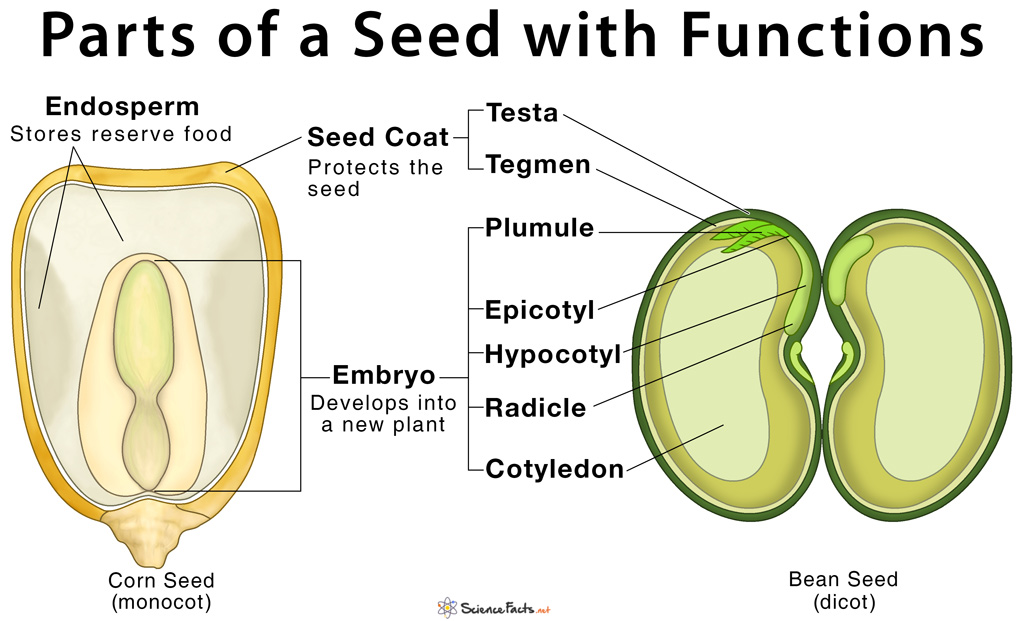Parts of a Seed and Their Functions
A seed is a structure that encloses the embryo of a plant in a protective outer covering. Under favorable conditions of growth, a seed gives rise to a new plant, using the nutrients stored in them.
The union of the male and female reproductive cells inside the ripened ovule of a flower helps in the formation of seeds in a plant. Different seeds have different sizes, shapes, and colors that participate in the reproduction of flowering plants.
Parts and Structure of a Seed

A typical seed consists of three main parts: 1) seed coat, 2) endosperm, and 3) embryo.
1) Seed Coat
They are the protective outer covering of a seed that is usually hard, thick, and brownish in color. The seed coat is formed from the outer covering of the ovule called the integument. It usually contains two layers: i) testa – the thick outer layer, and ii) tegmen – the delicate inner layer.
A seed coat has the following four parts: a) Micropyle – the small opening present at one end of the seed coat, b) Funiculus – the seed stalk with which the seed is attached to the fruit body, the integument, c) Hilum – the region from which the seed breaks off from the fruit, leaving a scar, and d) Raphe – the base of the funiculus that is fused with the integument.
Functions
- Protecting the seed from physical and mechanical damage
- Preventing the seed from germination even under favorable conditions of growth (seed dormancy)
- Preventing the excessive loss of water from the seeds
- Acting as a physical barrier against the entry of parasites
2) Endosperm
It is a tissue that is rich in oil, starch, and protein. Depending on the presence or absence of endosperm, seeds are of two types:
i) Non-endospermic or exalbuminous seeds – Characterized by the complete absence of the endosperm, such as the seeds of the pea plant, groundnut, and gram.
ii) Endospermic or albuminous seeds – Characterized by the presence of the endosperm, such as the seeds of millets, palms, and lilies.
Functions
- Storing of reserve foods that provide nourishment to the developing plant
- Protecting the embryo, the next part of the seed, by acting as the mechanical barrier
3) Embryo
They are the young plant that is developing inside the seed coat. An embryo contains the underdeveloped tissues of leaves, stem, and roots of a plant.
What are the Parts of an Embryo of a Seed
- Epicotyl – The tiny shoot of an embryo, from which the entire shoot system develops. The tip of the epicotyl is called plumule.
- Hypocotyl – The stage of transition for the growing shoot and root of the embryo
- Radicle – The tiny root of the embryo
- Cotyledons – They are the leaves of the embryo that provide nourishment to the developing plant. There are two types of cotyledons present in flowering plants: i) monocotyledonous or monocots – embryo with one cotyledon and ii) dicotyledonous or dicots – embryo with two cotyledons.
Functions
- Giving rise to a new complete new plant
- Storing food and nourishing the baby plant
-
References
Article was last reviewed on Thursday, February 2, 2023




Thanks! I was thinking about seed germination and realized I knew very little about seeds and thought to look it up!